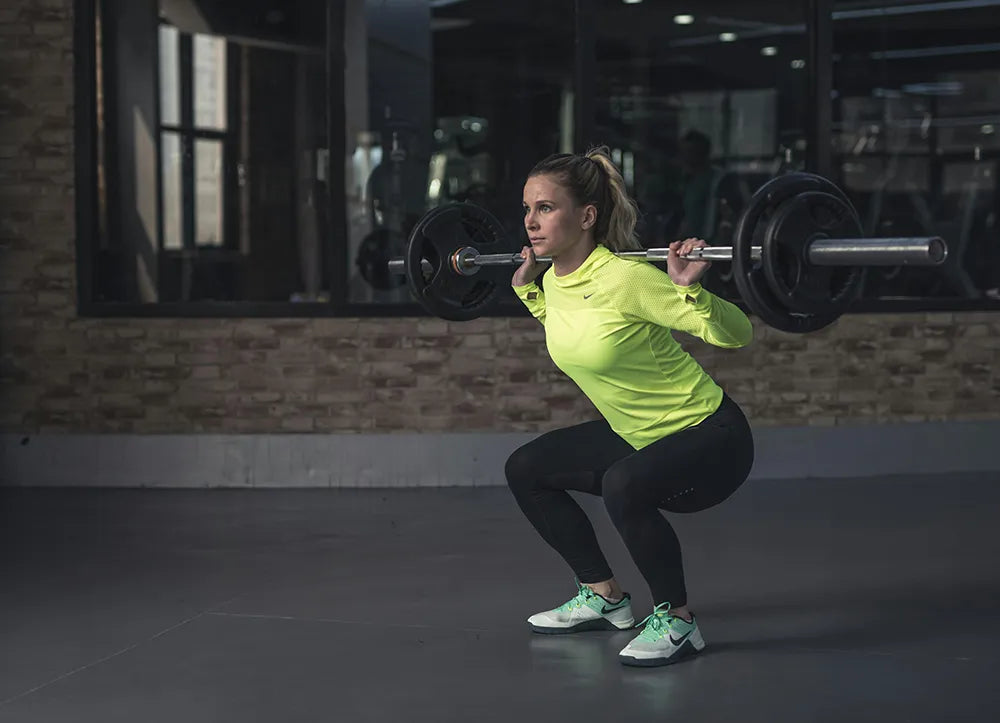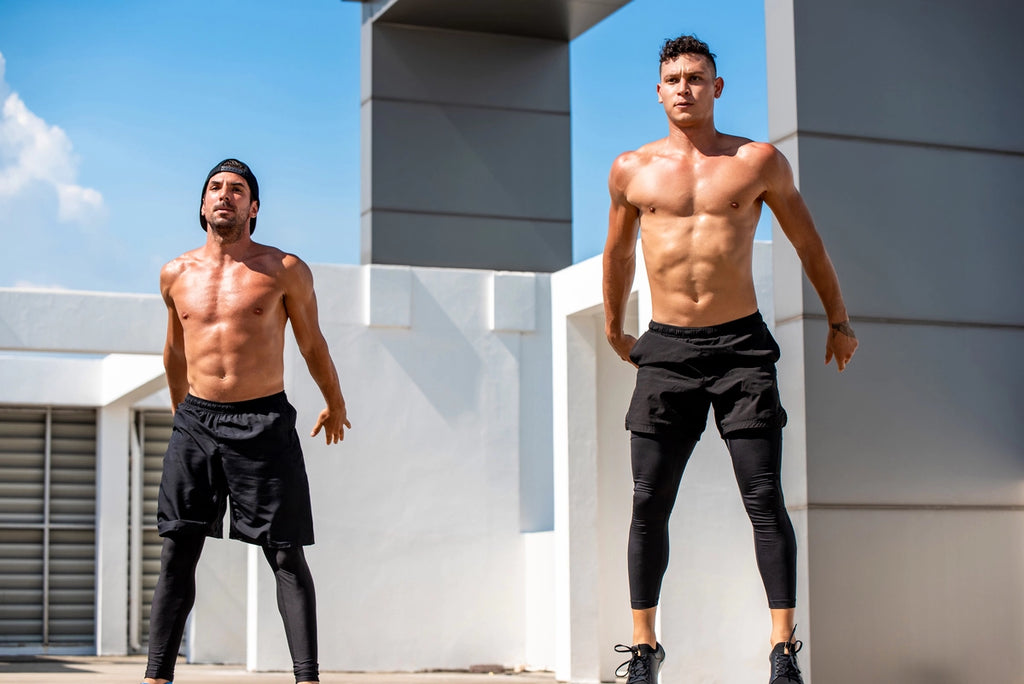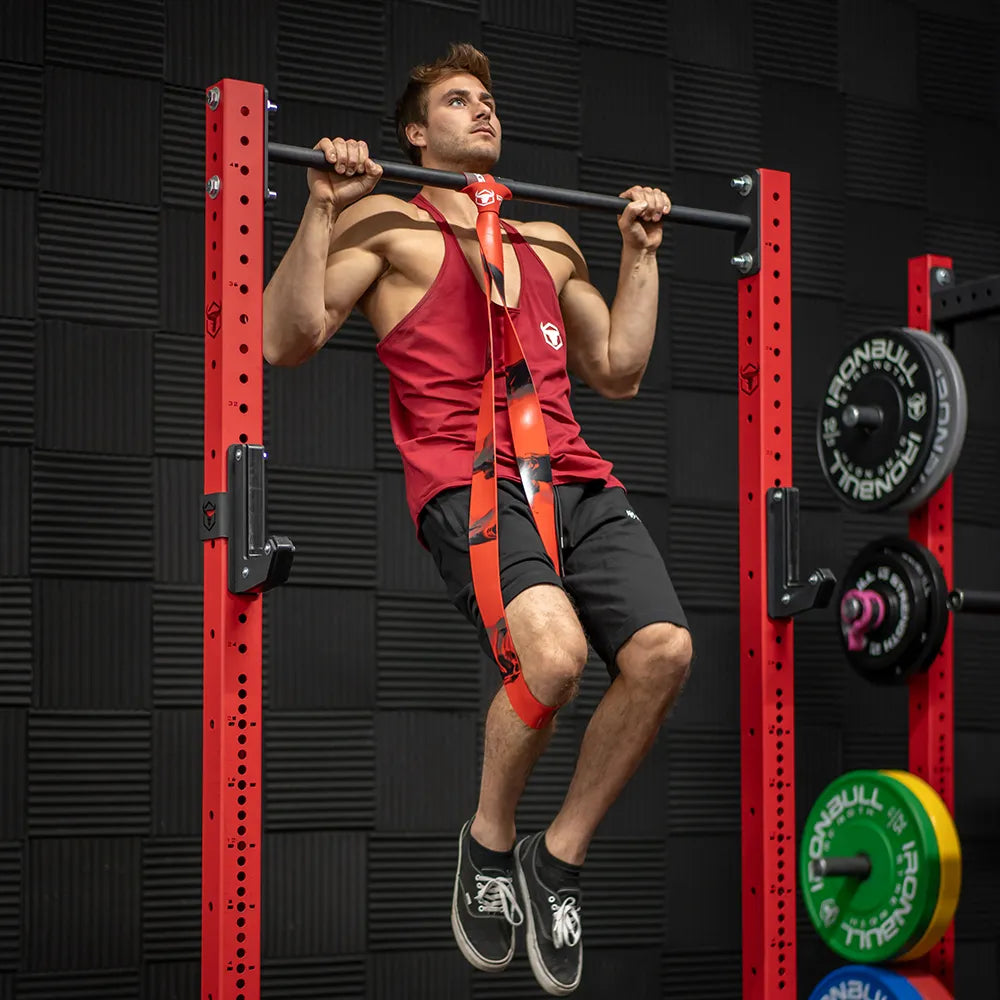Strength training for women: The science and the facts


There's a myth floating around that weight training is only for men. You know the one—where women are told that lifting weights will turn them into a she-hulk overnight.
Spoiler alert: it won't. Strength training has become increasingly recognized as a powerful tool for women, and it's high time to shed some light on its importance.
Strength training for women is not just about bulking up; it's about building a strong, healthy body that can tackle life's challenges. From improving bone density to enhancing mental health, the benefits are numerous.
So why not grab some dumbbells and jump into the world of weights?
This article will break down the myths, highlight the benefits, and provide a practical guide for women ready to embrace strength training.
Debunking Myths About Women and Strength Training
Let's tackle the first myth head-on: weight training makes women bulky. This misconception might stem from the images of competitive bodybuilders, but here's the truth.
Can women lift heavy weights?
Women have significantly lower testosterone levels compared to men, which means they don't pack on muscle mass as easily.
Scientific studies show that while women can undoubtedly gain strength and muscle, the increase in size is generally much less pronounced. [1] Instead of becoming bulky, women who lift weights often develop toned muscles that give a leaner appearance.
Think of it this way: if you're worried about looking like a linebacker, rest assured that most women are not built that way, even with dedicated strength training.
Another common concern is that strength training is dangerous for women. This myth often arises from the fear of injury or improper technique.
While it's true that poor form can lead to injuries, that's why guidance and education are essential. Learning the correct techniques can significantly minimize risks.
By starting with lighter weights and focusing on form, women can safely incorporate strength training into their routines. Plus, many gyms offer classes specifically designed for beginners, providing a supportive environment for learning the ropes.
Cardio vs. Strength Training
When it comes to fitness, cardio is often the star of the show. But let's not overlook the power of strength training, especially when considering EPOC, or Excess Post-Exercise Oxygen Consumption.
Simply put, EPOC refers to the amount of oxygen the body uses after exercise to restore itself to pre-exercise levels.
This process burns calories and can last for hours, even after the workout is over. Cardio does contribute to EPOC, but strength training has been shown to create a greater effect.
That's right—lifting weights can keep your metabolism revved up long after you've left the gym.
So, what's the takeaway here? Both cardio and strength training are essential for a well-rounded fitness routine.
However, if you're looking to boost your metabolism and continue burning calories post-workout, adding weights into the mix is a smart choice.
But let's look at the numbers to really understand the impact of different exercise types on calorie burn and EPOC. Consider this: a typical strength training session might burn around 600 calories during the workout, but the magic doesn't stop there.
Thanks to EPOC, you could torch an additional 80 calories post-workout. That's like getting a 13% bonus on your calorie-burning investment!
Now, let's compare this to other popular forms of exercise:
High-Intensity Interval Training (HIIT) is a true calorie-burning powerhouse. A 30-minute session can incinerate about 500 calories, with EPOC adding another 85 calories to the tally. That's an impressive 17% boost!
Traditional cardio activities like running or cycling, while effective, don't quite match up to strength training or HIIT in terms of EPOC. A 30-minute run might burn 300 calories with an additional 26 calories from EPOC - about an 8% increase.
Swimming, often praised for its full-body workout, burns around 350 calories in a 40-minute session. The EPOC effect adds another 30 calories, giving you a 9% bonus.
Yoga and Pilates still offer benefits for those who prefer lower-impact exercises, albeit with a smaller EPOC effect. An hour-long yoga session might burn 150 calories with a modest 2-5% EPOC boost.
The key takeaway here is that while all forms of exercise are beneficial, some give you more calorie-burning bang for your buck, especially when it comes to that coveted afterburn effect.
Incorporating a mix of strength training, HIIT, and traditional cardio into your routine can help maximize both immediate and long-term calorie burn.
Let's examine how different exercise modalities impact EPOC and overall calorie burn. The numbers speak for themselves and highlight why incorporating strength training into your fitness routine can be a game-changer.

Benefits of Strength Training for Women
Let's get to the good stuff—the benefits. First up, the physical perks.
Strength training can improve muscle tone and strength, which is crucial as we age. It's not just about aesthetics; building strength helps with everyday tasks, making life easier and more enjoyable.
Additionally, weightlifting enhances bone density, reducing the risk of osteoporosis. As women age, maintaining bone health becomes increasingly important. [2]
Why women should lift weights?
Lifting weights can help keep your bones strong and healthy, setting you up for a more active later life.
Then there's the metabolism boost. Who doesn't want to eat that extra slice of pizza without guilt?
Strength training revs up your metabolic rate, allowing you to manage weight more effectively.
On the mental and emotional front, the benefits are equally impressive. Women often experience increased confidence and self-esteem after engaging in strength training.
Completing a tough workout can give you a sense of achievement that's hard to replicate elsewhere.
Moreover, lifting weights can help reduce anxiety and depression. The endorphins released during exercise act as natural mood lifters.
Plus, a good workout can lead to better sleep and improved stress management.
Let's not forget the long-term health benefits either. Regular strength training can reduce the risk of chronic diseases, improve posture, and enhance overall functionality.
This means a better quality of life, allowing women to maintain independence as they age.
How to start weightlifting as a woman
So, how does one embark on this weight-lifting journey?
First, it's essential to choose the right equipment.
Dumbbells, barbells, and resistance bands are excellent choices for beginners. Many products are designed specifically for women, focusing on comfort and usability.
When it comes to creating a workout schedule, balance is key. It's crucial to integrate both strength training and cardio into your routine. [2]
A well-rounded plan can help prevent burnout and keep things interesting.
An example weekly workout schedule for women:
- Monday: Upper body strength training
- Tuesday: Cardio (like running or cycling)
- Wednesday: Lower body strength training
- Thursday: Rest or light activity
- Friday: Full-body workout
- Saturday: Cardio
- Sunday: Rest
This plan keeps your muscles engaged while allowing for recovery time, which is essential for growth.
Beginner Workout Plan for Women
Ready to lift? Let's break down a beginner dumbbell workout.
Start with manageable weights to ensure proper form.
Here's a simple routine:
Squats: Stand with feet shoulder-width apart, holding dumbbells at your sides. Lower your body as if sitting back in a chair, keeping your chest up.
Aim for 10-15 reps.
Dumbbell Bench Press: Lie on a bench with a dumbbell in each hand. Push the weights up above your chest, then lower them back down.
Do 10-12 reps.
Bent-Over Rows: Bend slightly at the hips with a dumbbell in each hand. Pull the weights towards your hips, squeezing your shoulder blades together.
Perform 10-12 reps.
Deadlifts: With feet hip-width apart, hold dumbbells in front of your thighs. Lower the weights while keeping your back straight, then return to standing.
Aim for 10-15 reps.
Starting with these exercises will give you a solid foundation. As you progress, consider increasing the weights or adding more complex movements.
Bodybuilding Women: Taking Strength Training to the Next Level
For those ready to step up their game, transitioning from beginner to advanced can be exciting.
Signs that you're ready to increase intensity include feeling comfortable with your current weights and not experiencing muscle fatigue at the end of your workouts.
Incorporating compound movements, like squats and deadlifts, can further enhance your strength training routine.
These exercises engage multiple muscle groups, giving you more bang for your buck.
If you're serious about bodybuilding, consider investing in equipment like a power rack or squat rack for your home gym with an adjustable weight bench so you can perform basically every exercise.
Having the right tools at your disposal can make all the difference in your training.
Owning a squatting rack not only opens up a world of exercises but also provides a safe environment for lifting heavier weights when equipping it with spotter arms.
It's like having a gym in your garage—minus the sweaty strangers.
Building strength takes time and dedication, but the rewards are worth it.
Final Thoughts
Strength training for women is an empowering journey filled with numerous benefits. We've debunked the myths that hold many back, highlighted the physical and mental advantages, and laid out practical steps to get started.
As you step into the world of weights, remember that every rep is a step toward a stronger, healthier you. So, why not give that beginner workout plan a shot?
Share your progress with friends or on social media; you might inspire someone else to lift too!
Strength training isn't just for the gym rats; it's for everyone. Grab those weights, and show the world what you're made of.
Reference
- Staron RS, Karapondo DL, Kraemer WJ, Fry AC, Gordon SE, Falkel JE, Hagerman FC, Hikida RS. Skeletal muscle adaptations during early phase of heavy-resistance training in men and women. J Appl Physiol (1985). 1994 Mar;76(3):1247-55. doi: 10.1152/jappl.1994.76.3.1247. PMID: 8005869.
- Kraemer WJ, Mazzetti SA, Nindl BC, Gotshalk LA, Volek JS, Bush JA, Marx JO, Dohi K, Gómez AL, Miles M, Fleck SJ, Newton RU, Häkkinen K. Effect of resistance training on women's strength/power and occupational performances. Med Sci Sports Exerc. 2001 Jun;33(6):1011-25. doi: 10.1097/00005768-200106000-00022. PMID: 11404668.










